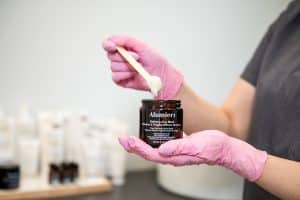
Is Laser Hair Removal Worth the Investment?
Is Laser Hair Removal Worth the Investment? Delving into the Value of Laser Hair Removal: Assessing Treatment Worth Laser hair removal has become a popular
blog post
In recent years, fat freezing, also known as cryolipolysis, has gained popularity as a non-invasive method for reducing stubborn fat deposits in various areas of the body. This innovative procedure selectively targets and destroys fat cells through controlled cooling, promising to sculpt the body without the need for surgery or downtime. However, as with any cosmetic treatment, concerns about potential risks and side effects, including damage to internal organs, have emerged. In this blog, we’ll explore the question: Can fat freezing damage organs?
Before delving into the potential effects on organs, it’s essential to understand how cryolipolysis works. During a fat freezing session, a specialised device is used to apply controlled cooling to specific areas of the body where excess fat is present. The cold temperature causes fat cells to crystallise and undergo a natural process known as apoptosis, or cell death. Over time, the body’s lymphatic system clears away the dead fat cells, resulting in a more contoured appearance.
According to scientific research and expert opinion, fat freezing primarily targets and affects adipose tissue, or fat cells, in the treated area. The controlled cooling is designed to penetrate the skin and target fat cells without causing damage to surrounding tissues or organs. Studies evaluating the safety and efficacy of cryolipolysis have generally reported minimal adverse effects, with most patients experiencing temporary side effects such as redness, bruising, or numbness in the treated area.
The body’s lymphatic system plays a crucial role in the elimination of dead fat cells following cryolipolysis. Once the fat cells are destroyed, they are gradually absorbed by the lymphatic vessels and transported to the lymph nodes for processing and elimination. This natural process ensures that the remnants of the treated fat cells do not pose a risk to internal organs.
Numerous clinical studies have investigated the safety profile of cryolipolysis and its effects on internal organs. These studies have generally found that fat freezing does not cause damage to vital organs such as the liver, kidneys, or heart. Instead, the procedure primarily affects subcutaneous fat tissue in the targeted area, with no significant impact on organ function or structure.
While fat freezing is considered a safe and effective procedure for most individuals, certain factors may increase the risk of complications or adverse effects. These factors may include:
In conclusion, the available evidence suggests that fat freezing is a safe and effective procedure for reducing localised fat deposits without causing damage to internal organs. When performed by a qualified and experienced practitioner, cryolipolysis primarily targets adipose tissue in the treated area, with minimal risk to surrounding tissues or organs.
However, as with any medical procedure, it’s essential to undergo a thorough evaluation and consultation with a qualified healthcare provider before undergoing fat freezing. By discussing your medical history, treatment goals, and any concerns you may have, you can ensure a safe and satisfactory experience with fat freezing.
Ultimately, the key to a successful fat freezing treatment lies in choosing a reputable provider, following pre- and post-procedure instructions diligently, and maintaining realistic expectations. With proper care and guidance, fat freezing can be a valuable tool in achieving your aesthetic goals while prioritising your health and well-being.
Book your free consultation today.

Is Laser Hair Removal Worth the Investment? Delving into the Value of Laser Hair Removal: Assessing Treatment Worth Laser hair removal has become a popular

Is A Chemical Peel Worth It? Unlocking the Benefits of Chemical Peels: Evaluating Treatment Worth Chemical peels have long been a staple in skincare regimens,

What is the Success Rate of Microneedling? Exploring Microneedling Success: Understanding Treatment Efficacy Microneedling has garnered attention as a promising skincare treatment, praised for its

Is Microneedling Actually Good For Your Skin? Unveiling the Benefits of Microneedling: A Closer Look at Skincare Advantages Microneedling has emerged as a popular skincare